Beijing struggles to cut smog with wide-ranging restrictions
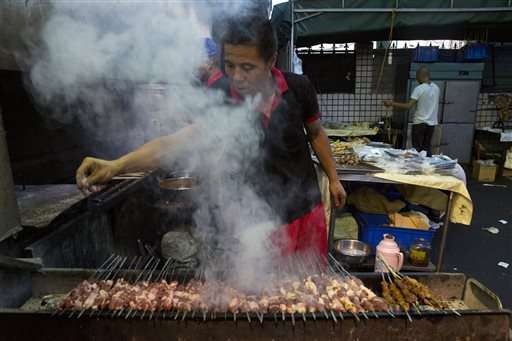
When Dong Yingli first opened her east Beijing meat skewers restaurant six years ago, her chefs cooked the lamb, chicken hearts and assorted treats over an uncovered grill, with giant fans blowing the clouds of pungent smoke from the sidewalk into the middle of the street.
Elsewhere in this sprawling capital city, four coal-fired power plants belched exhaust into the smoggy skies, while countless steel and cement factories in neighboring provinces emitted millions of tons of cancer-causing particles into the air.
Now, more than a year since Chinese Premier Li Keqiang declared war on pollution across the country, Beijing's massive anti-smog fight is transforming this 20-million-person metropolis in ways both big and small. Still, as was evident on several days over the past week, when a thick gray pall filled the streets, the Chinese smog battle is far from won.
Authorities in Beijing are shutting down coal-fired power plants within the city limits and have tried to reduce vehicle exhaust by forcing many residents to wait years to win a license plate. The capital last Monday launched the country's strictest ban on smoking indoors. Officials have even tried to convince people to cut back on the centuries-old tradition of setting off fireworks during Chinese New Year, though booms and crackles still rang out across the city in February.
In the predominantly Muslim neighborhood where Dong runs her restaurant, inspectors have become a regular sight as they make sure vendors have installed thousands of dollars' worth of ventilation and filters. Though Dong doesn't think her business had much to do with the state of Beijing's air, she says the extra enforcement in general has made breathing easier.
"The environment has gotten a lot better here," Dong said at a sidewalk table on a recent smoggy evening. "There used to be so much smoke here, it was hard to even see. This needed to be done."
Despite all the reforms, official figures show Beijing's average density of PM2.5—harmful particles that are small enough to enter bloodstreams—was nine times the World Health Organization air quality safety level in the first three months of the year. That still marked a 19 percent drop from pollution levels a year before.
The city has shown it can bring back days-long stretches of blue skies for high-profile events such as last year's Asia-Pacific Economic Cooperation group meeting, but only by wielding the toughest of measures, such as encouraging residents to leave town and closing factories more than 120 miles away. Keeping the skies clean on a daily basis will require more permanent fixes, said Li Xiang, with Beijing's Environmental Protection Ministry.
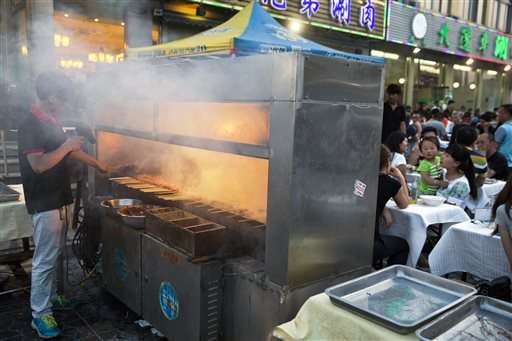
"Changing air pollution is a long-term project," Li said. "In other cities, like London and Los Angeles in the U.S., it took about 50 years to reduce air pollution and show significant change. ... Beijing has made significant improvements, but meeting people's expectations will take some time."
The anti-pollution fight has become a particularly sensitive task for image-conscious Chinese leaders as the country becomes known globally as much for its severe pollution as its economic growth.
Environmental woes have also become one of the top causes of social unrest in China, as well as a major health hazard. Studies show pollution causes more than a million premature deaths annually in China and shortens life spans by an average of five years.
Lax enforcement of the new environmental restrictions is a clear obstacle to cleaning up the capital's air.
For example, although Beijing has banned open-air barbecues within its Fourth Ring Road, clouds of skewer smoke are common sights in the twisting alleyways and roads throughout the city center. Many drivers regularly flout restrictions that require cars to stay off the roads on certain days of the week.
The biggest problem, however, is much of Beijing's smog drifts in from beyond its borders, especially if winds blow in from the south or east.
Heavy industry in neighboring provinces, in particular Hebei, Shanxi and Shandong, account for 28 to 36 percent of the fine particulate in Beijing's air, according to Chinese state media. Shutting down those industries would hit one of the most economically vital areas in the country.
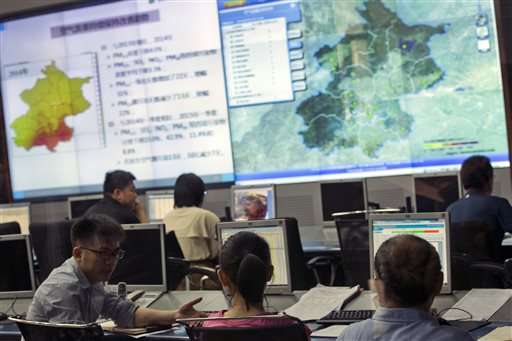
An analysis by the environmental group Greenpeace showed the five smoggiest parts of China all sit just hundreds of miles from Beijing, with the capital itself suffering the country's fourth-worst air quality average.
"You have to work with the surrounding region and control the heavy industries there," said Fang Yuan, a campaigner in Greenpeace's East Asia office.
Yet without much of the international media and diplomatic corps watching, like they do in the capital, companies have been much slower shutting down cement, chemical and other industrial factories elsewhere in the northeast.
About a three-hour drive from Beijing, on the outskirts of the city of Tianjin, hundreds of angry residents have taken to the streets over the past week to protest what they say are the rising emissions of the giant Rock Check steel plant, which churns about a mile from a teeming housing complex. The protesters say they suspect the plant has caused outbreaks of lung cancer in the area.
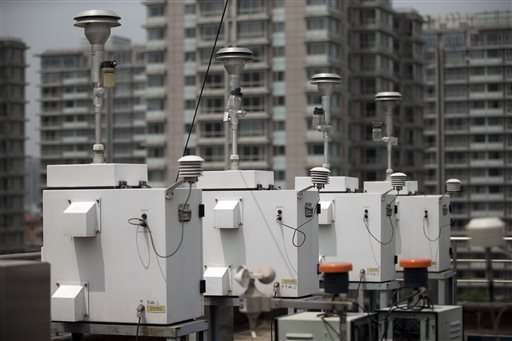
A neighbor who would identify herself only by her surname, Hang, said she and other protesters have blocked coal-carrying trucks from the plant and wouldn't leave the streets until the plant either closes or cuts emissions to a tolerable level.
A Rock Check spokesman said last week the company was considering an interview request, but subsequent phone calls to him rang unanswered.
"Why does Beijing have so much pollution?" Hang asked as the factory's multiple smokestacks puffed smoke high into the sky. "It's because of the areas around it. It's all like this. Beijing hardly produces any of its own pollution anymore. We have industry all around us. It doesn't matter which way the wind blows."
-
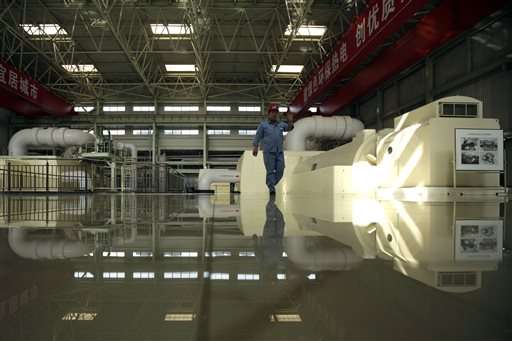
In this photo taken May 21, 2015, a worker walks through a gas-fired thermoelectric power plant in Beijing. More than a year since Chinese Premier Li Keqiang declared war on pollution across the country, Beijing's massive anti-smog fight is transforming this 20-million-person metropolis in ways both big and small. (AP Photo/Mark Schiefelbein) -
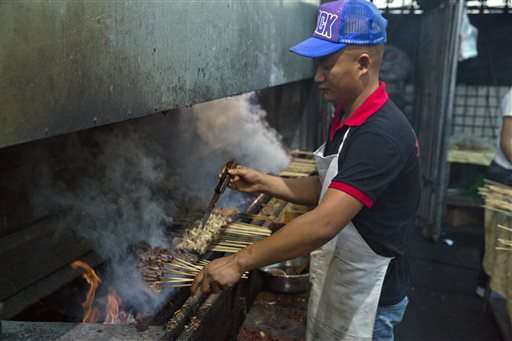
In this photo taken May 26, 2015, a worker at a restaurant barbecues meat skewers over a smoke ventilator in Beijing. More than a year since Chinese Premier Li Keqiang declared war on pollution across the country, Beijing's massive anti-smog fight is transforming this 20-million-person metropolis in ways both big and small.(AP Photo/Ng Han Guan)
© 2015 The Associated Press. All rights reserved.




















